
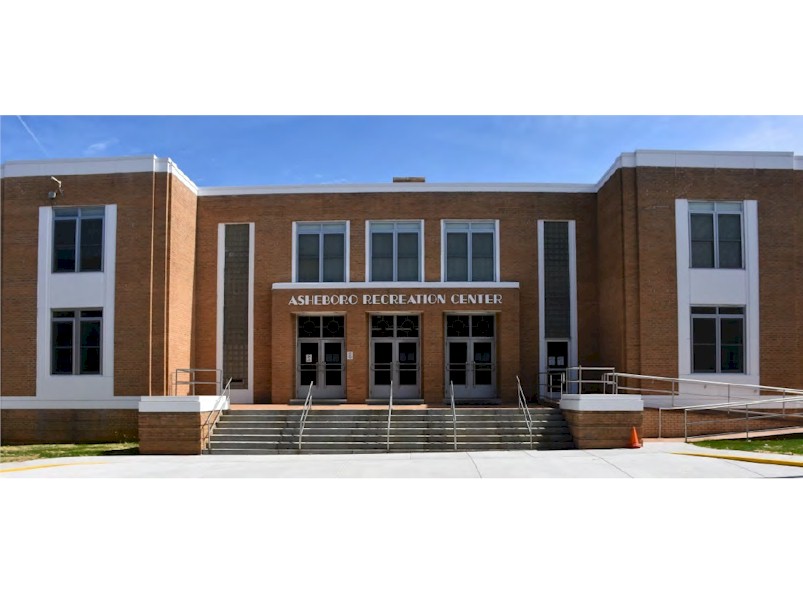
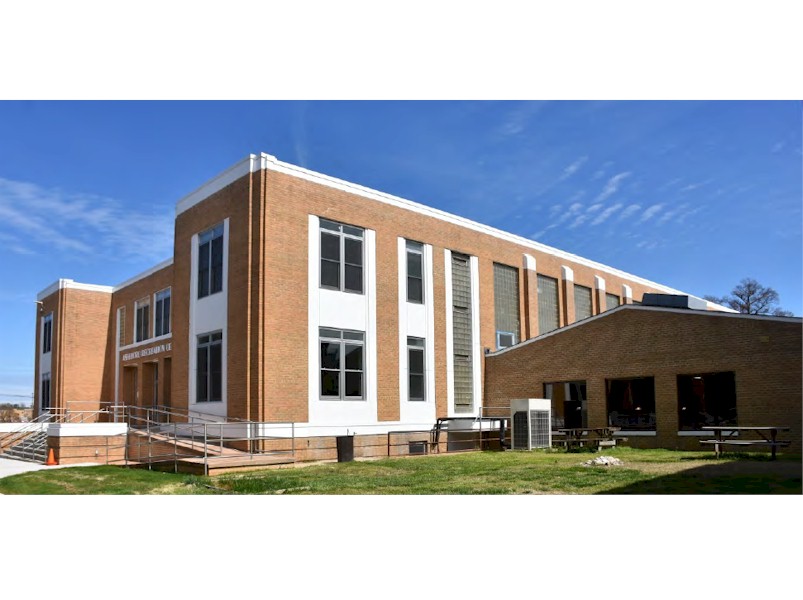
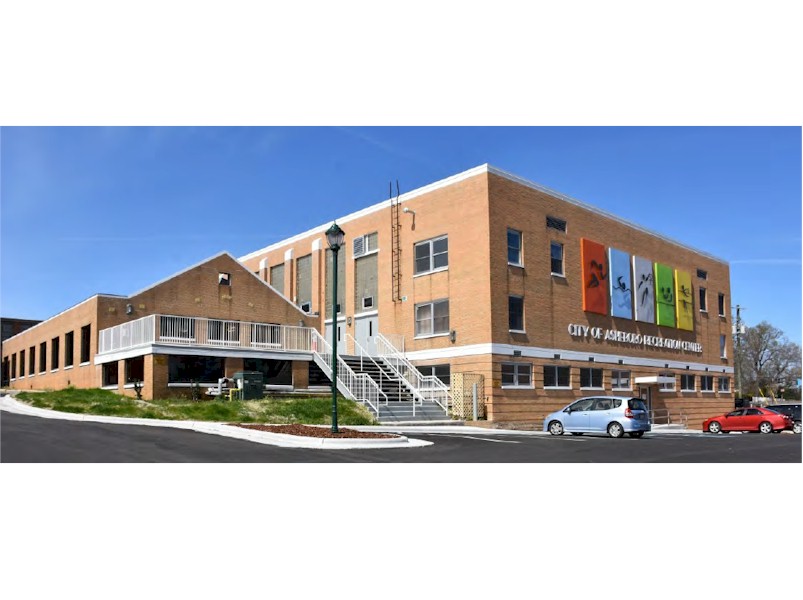
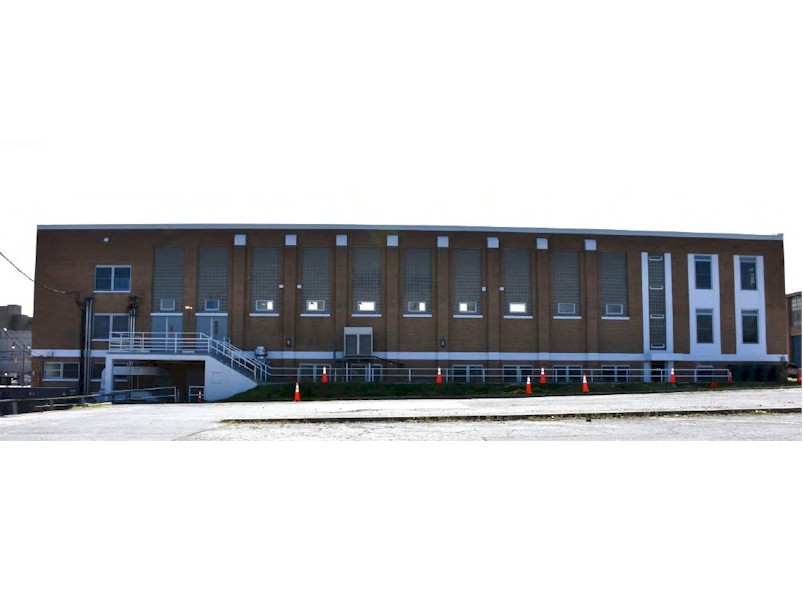
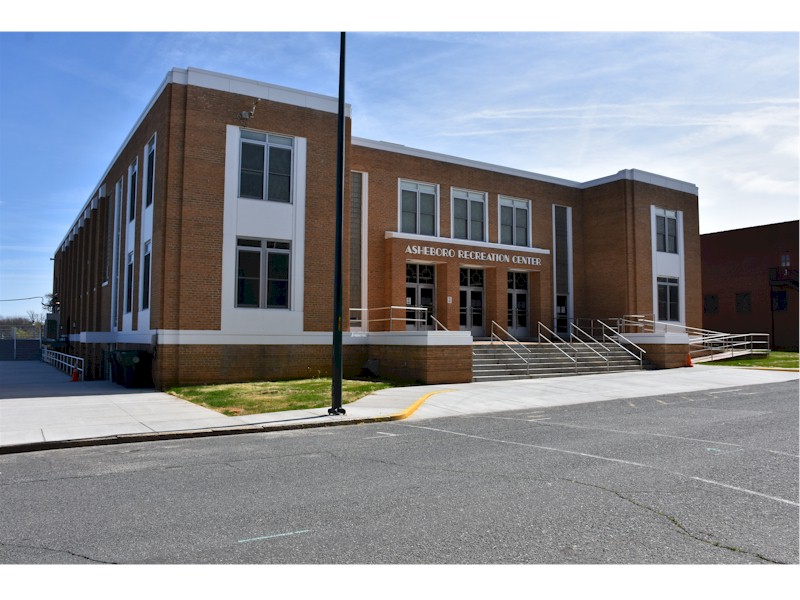
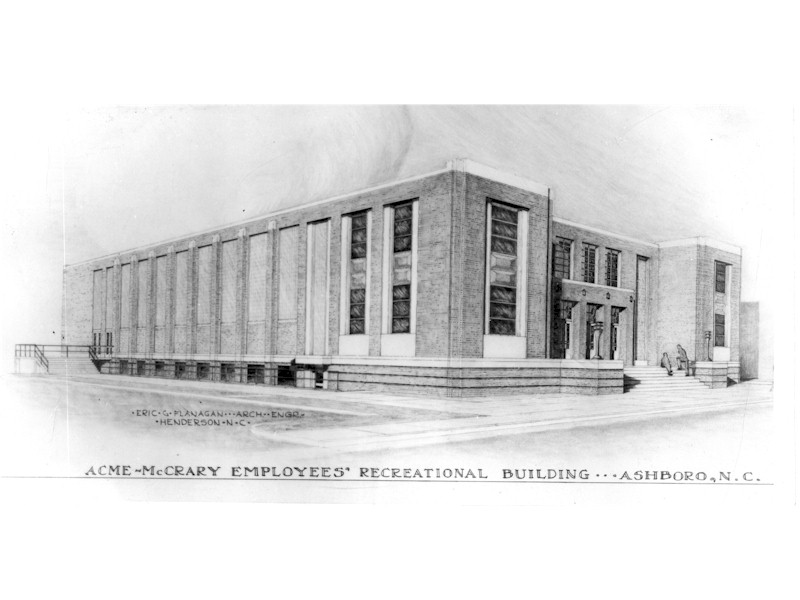
Rendering by architect Eric G. Flanagan
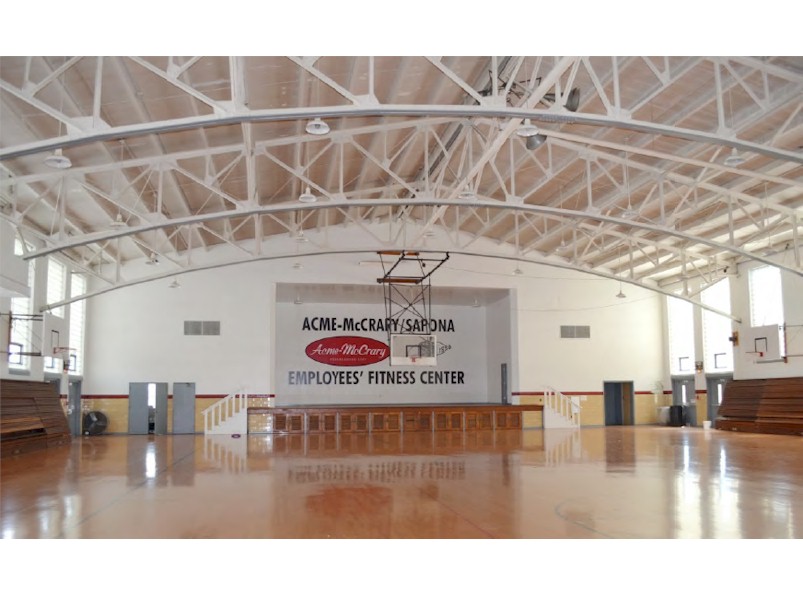
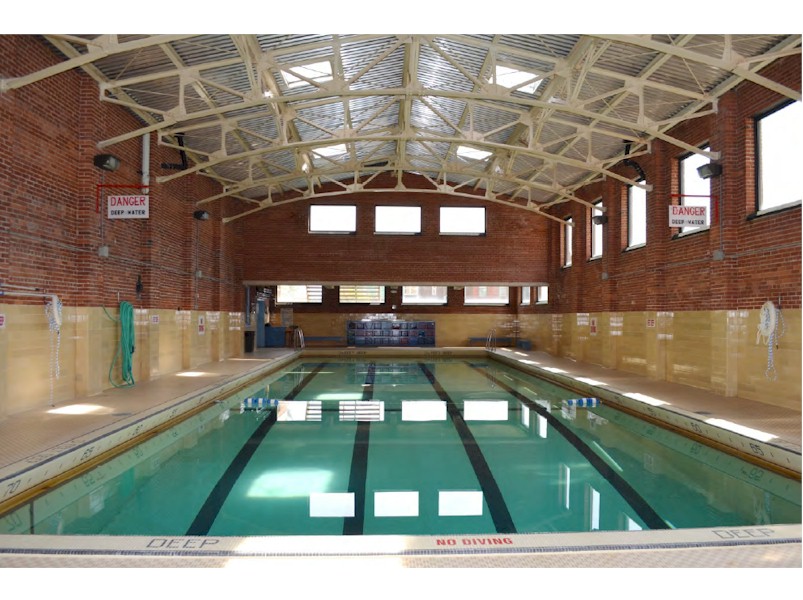
Read the Landmark Designation Report
NOTE: Information about the Acme-McCrary & Sapona Recreation Center is included in a larger Landmark Designation Nomination report for the Acme-McCrary factory complex in downtown Asheboro. Information about the Recreation Center can be found on pages 25-29 of the report.
Read a history of the Acme-McCrary & Sapona Recreation Center
Read the Landmark Designation Resolution
Out of the Acme-McCrary Hosiery Mills’ belief that “a product of the highest quality requires happy, well-adjusted employees,” and its concern for the “round-the-clock welfare of those in the organization,” the Acme-McCrary Recreation Building was born. Envisioned in the midst of World War II and opened in 1949, the facility provided a bounty of recreational, relaxation and social gathering opportunities for the employees and the community.
Acme-McCrary, established in 1909 by D.B. McCrary and T.H. Redding as Acme Hosiery Mills, blossomed into Asheboro’s leading industry and a worldwide innovator in the field of women’s stockings and hosiery. By the company's 50th anniversary in 1959, it employed 1,800 workers over five plants in Randolph County and boasted a payroll of $5 million. It had expanded into all types of hosiery, and operated sales offices in Asheboro, Chicago, Dallas, San Francisco and New York City’s Empire State Building.
By the time the recreation building was envisioned, Charles W. McCrary Sr. had become Acme-McCrary president. He became the driving force behind the facility, it was said, as a result of his experiences as a student at Davidson College. In the 1940s, a federal program was available to support companies that wanted to build recreational facilities for their employees, on the condition that ownership was turned over to the workers. In December 1943, Acme-McCrary announced the formation of the Acme-McCrary Employees Recreational Association, with a majority of the board of director consisting of employees. Acme-McCrary backed the association with $126,494 (a value of about $1.9 million today) earmarked for a building to be built when wartime restrictions were lifted. Bids were let in April 1948, and the doors to opened on December 22, 1949.
Built at a cost of $500,000 (about $5.4 million today), the Acme-McCrary facility featured a 1,200-seat gymnasium/auditorium with collapsible wood bleachers and a stage, and a tiled, indoor heated swimming pool. In the basement was a four-lane, duck-pin bowling alleys with a soda fountain and jukebox nearby, and a full-service cafeteria. There were volleyball courts, ping pong tables, four shower and locker rooms, a meeting space, a reading room, staff offices and caretaker quarters. The top floor included a lounge with a television set, where locals would gather to watch the World Series at a time when few had television in their homes. Also on the top floor were two apartments, often shared by McCrary Eagles players.14 Few if any communities could boast of a similar facility. In later years, the bowling alley was repurposed for a weight room, and some of the upper floor space became an aerobics room.
Available not just to employees but to local residents as well, the recreation building quickly became a hub of community life. The first basketball game in November 1949 saw the Eagles beat the Davidson College Wildcats.16 In 1959, Cheek reported that the cafeteria hosted 49 family night dinners and served 26 meals to area civic clubs. Organizations such as the Sertoma Club, the Optimists and Toastmasters used the meeting room. That same year, Cheek also said, 176 people were taught to swim. By the time of the facility’s 50th anniversary in 1999, Smith Langdon, a later recreation director, estimated that some 7,500 people had taken swimming lessons in the pool.18 There were volleyball leagues and gym classes. It was also a social center, as Langdon told The Randolph Guide: “This was the place after school. From then until closing time, this place was alive with music and dancing. It was good, clean fun."
When Acme-McCrary Corporation was sold to MAS Holdings in 2017, the employees association donated both the gym, now known as the Acme-McCrary and Sapona Fitness Center, and the ballpark to the City of Asheboro, and dissolved.23 Having taken over maintenance responsibility for the ballpark some 30 years earlier, the city refurbished the gym and to give it continuing life as a community recreation center.
Related Sites: